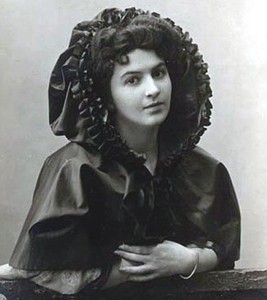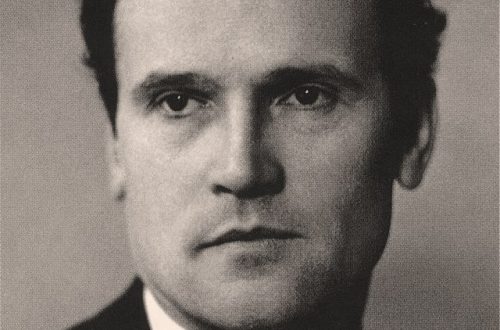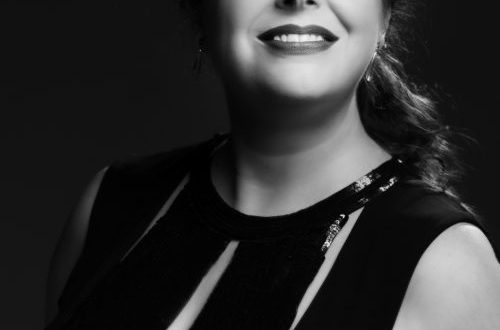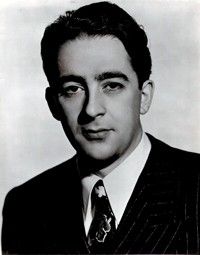
Maria Nikolaevna Kuznetsova-Benois |
Maria Kuznetsova-Benois

Maria Nikolaevna Kuznetsova is a Russian opera singer (soprano) and dancer, one of the most famous singers of pre-revolutionary Russia. Leading soloist of the Mariinsky Theatre, participant of Sergei Diaghilev’s Russian Seasons. She worked with N.A. Rimsky-Korsakov, Richard Strauss, Jules Massenet, sang with Fyodor Chaliapin and Leonid Sobinov. After leaving Russia after 1917, she continued to perform successfully abroad.
Maria Nikolaevna Kuznetsova was born in 1880 in Odessa. Maria grew up in a creative and intellectual atmosphere, her father Nikolai Kuznetsov was an artist, and her mother came from the Mechnikov family, Maria’s uncles were Nobel laureate biologist Ilya Mechnikov and sociologist Lev Mechnikov. Pyotr Ilyich Tchaikovsky visited the Kuznetsovs’ house, who drew attention to the talent of the future singer and composed children’s songs for her, from childhood Maria dreamed of becoming an actress.
Her parents sent her to a gymnasium in Switzerland, returning to Russia, she studied ballet in St. Petersburg, but refused to dance and began to study vocals with the Italian teacher Marty, and later with the baritone and her stage partner I. V. Tartakov. Everyone noted her pure beautiful lyrical soprano, noticeable talent as an actress and feminine beauty. Igor Fedorovich Stravinsky described her as “… a dramatic soprano that could be seen and listened to with the same appetite.”
In 1904, Maria Kuznetsova made her debut on the stage of the St. Petersburg Conservatory as Tatyana in Tchaikovsky’s Eugene Onegin, and on the stage of the Mariinsky Theater in 1905 as Marguerite in Gounod’s Faust. Soloist of the Mariinsky Theatre, with a short break, Kuznetsova remained until the revolution of 1917. In 1905, two gramophone records with a recording of her performances were released in St. Petersburg, and in total she made 36 recordings during her creative career.
Once, in 1905, shortly after Kuznetsova’s debut at the Mariinsky, during her performance in the theater, a quarrel broke out between students and officers, the situation in the country was revolutionary, and panic began in the theater. Maria Kuznetsova interrupted Elsa’s aria from R. Wagner’s “Lohengrin” and calmly sang the Russian anthem “God Save the Tsar”, the buzzers were forced to stop the quarrel and the audience calmed down, the performance continued.
The first husband of Maria Kuznetsova was Albert Albertovich Benois, from the well-known dynasty of Russian architects, artists, historians Benois. In the prime of her career, Maria was known under the double surname Kuznetsova-Benoit. In the second marriage, Maria Kuznetsova was married to the manufacturer Bogdanov, in the third – to the banker and industrialist Alfred Massenet, nephew of the famous composer Jules Massenet.
Throughout her career, Kuznetsova-Benois participated in many European opera premieres, including the parts of Fevronia in Rimsky-Korsakov’s The Tale of the Invisible City of Kitezh and the Maiden Fevronia and Cleopatra from the opera of the same name by J. Massenet, which the composer wrote especially for her. And also on the Russian stage she presented for the first time the roles of Woglinda in R. Gold of the Rhine by R. Wagner, Cio-Cio-san in Madama Butterfly by G. Puccini and many others. She has toured cities in Russia, France, Great Britain, Germany, Italy, the USA and other countries with the Mariinsky Opera Company.
Among her best roles: Antonida (“Life for the Tsar” by M. Glinka), Lyudmila (“Ruslan and Lyudmila” by M. Glinka), Olga (“Mermaid” by A. Dargomyzhsky), Masha (“Dubrovsky” by E. Napravnik), Oksana (“Cherevichki” by P. Tchaikovsky), Tatiana (“Eugene Onegin” by P. Tchaikovsky), Kupava (“The Snow Maiden” by N. Rimsky-Korsakov), Juliet (“Romeo and Juliet” by Ch. Gounod), Carmen (“Carmen” Zh Bizet), Manon Lescaut (“Manon” by J. Massenet), Violetta (“La Traviata” by G. Verdi), Elsa (“Lohengrin” by R. Wagner) and others.
In 1914, Kuznetsova temporarily left the Mariinsky Theater and, together with the Russian Ballet of Sergei Diaghilev, performed in Paris and London as a ballerina, and also partially sponsored their performance. She danced in the ballet “The Legend of Joseph” by Richard Strauss, the ballet was prepared by the stars of their time – composer and conductor Richard Strauss, director Sergei Diaghilev, choreographer Mikhail Fokin, costumes and scenery Lev Bakst, leading dancer Leonid Myasin. It was an important role and good company, but from the very beginning the production faced some difficulties: there was little time for rehearsals, Strauss was in a bad mood, as the guest ballerinas Ida Rubinstein and Lydia Sokolova refused to participate, and Strauss did not like to work with French musicians and constantly quarreled with the orchestra, and Diaghilev was still worried about the departure of the dancer Vaslav Nijinsky from the troupe. Despite problems behind the scenes, the ballet debuted successfully in London and Paris. In addition to trying her hand at ballet, Kuznetsova performed several operatic performances, including Borodin’s production of Prince Igor in London.
After the revolution in 1918, Maria Kuznetsova left Russia. As befits an actress, she did it in dramatic beauty – dressed as a cabin boy, she was hiding on the lower deck of a ship bound for Sweden. She became an opera singer at the Stockholm Opera, then in Copenhagen and then at the Royal Opera House, Covent Garden in London. All this time she constantly came to Paris, and in 1921 she finally settled in Paris, which became her second creative home.
In the 1920s Kuznetsova staged private concerts where she sang Russian, French, Spanish and gypsy songs, romances and operas. At these concerts, she often danced Spanish folk dances and flamenco. Some of her concerts were charitable to help the needy Russian emigration. She became the star of the Parisian opera, being accepted into her salon was considered a great honor. “The color of society”, ministers and industrialists crowded in her front. In addition to private concerts, she has often worked as a soloist at many opera houses in Europe, including those at Covent Garden and at the Paris Opera and the Opéra Comique.
In 1927, Maria Kuznetsova, together with Prince Alexei Tsereteli and baritone Mikhail Karakash, organized the Russian Opera private company in Paris, where they invited many Russian opera singers who had left Russia. The Russian Opera staged Sadko, The Tale of Tsar Saltan, The Tale of the Invisible City of Kitezh and the Maiden Fevronia, The Sorochinskaya Fair and other operas and ballets by Russian composers and performed in London, Paris, Barcelona, Madrid, Milan and in distant Buenos Aires. The Russian Opera lasted until 1933.
Maria Kuznetsova died April 25, 1966 in Paris, France.





